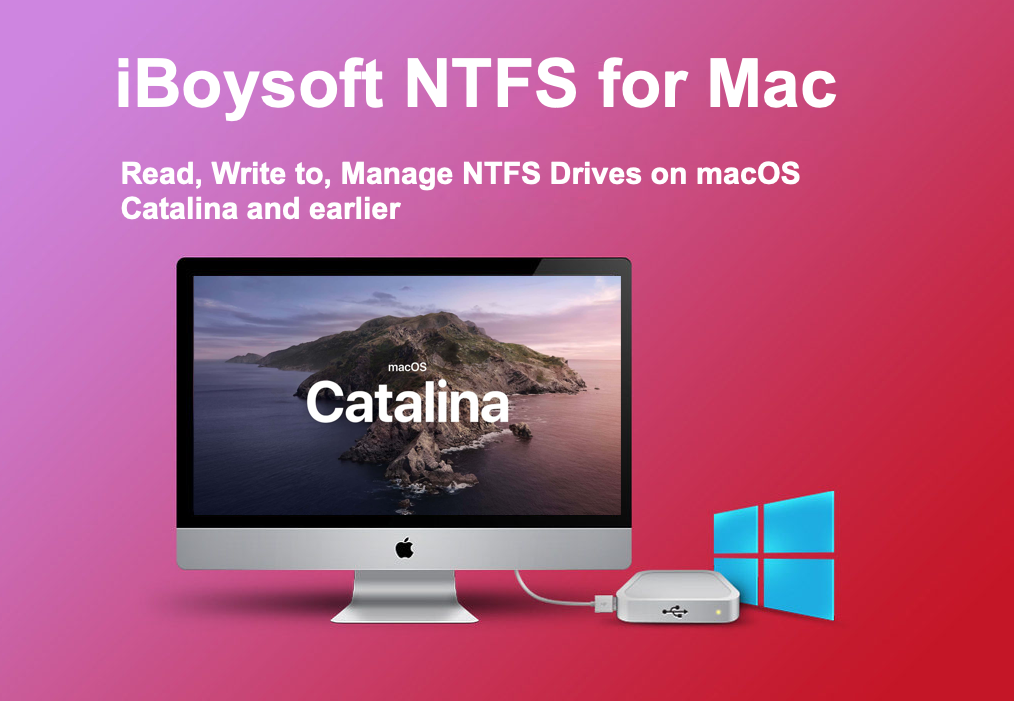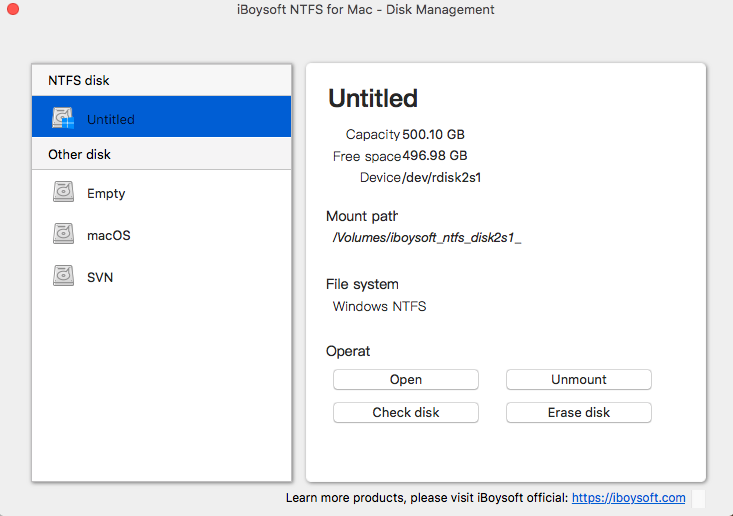


Once you're satisfied that's what you want to do select erase to erase and reformat your external hard drive. Then choose either "Mac OS " Extended (Journaled)" or "ExFAT" from the format drop down menu. Then you can write, copy, delete, and modify files on the NTFS drive smoothly.
#OPEN NTFS ON MAC FOR MAC#
Microsoft NTFS for Mac by Tuxera is easy-to-use software that makes this possible. To add, save, or write files to your Mac, you need an add-on NTFS-driver. When you get a new Mac, it’s only able to read Windows NTFS-formatted USB drives. iBoysoft NTFS for Mac will automatically mount all NTFS partitions in read-write mode. Open, edit, copy, move, or delete files stored on Windows NTFS-formatted USB drives on your Mac. Connect the read-only Microsoft NTFS drive to your Mac. NTFS for Mac free download, install and launch on your Mac.
#OPEN NTFS ON MAC FOR FREE#
(I chose "extra" for this example) In the right pane select erase from the upper tab options 2nd to the right. How to use iBoysoft NTFS for Mac for free 1.
It is well priced <> and enables read and write access to your NTFS.Step 3: Give it a name, choose FAT or exFAT in Format, and GUID Partition Table in Scheme. Running a Mac and having NTFS formatted external disks, you definitely need NTFS for Mac. Step 2: Right-click the disk/volume and select Erase, or you can select the disk/volume and click on Erase on the toolbar at the top. In the Left pane choose the drive you want to erase. If you want to format the USB as exFAT, open the Disk Utility from Launch pad, or just just for it in the spotlight. Step 1: Open Disk Utility software and find your NTFS disk/volume on the left list. In our solution, we will use three software packages to enable the NTFS driver for macOS Sierra or Mojave.
#OPEN NTFS ON MAC MAC OS#
Launch disk utility then click on the hard drive you want to reformat. Let’s see how to enable NTFS writing in Mac OS Mojave to avoid compatibility issues. From the Mac desktop, open a Terminal window again and run the following. Youll find "Disk Utility" in "Applications" in the "Utilities" folder of you Macintosh hard drive. Try Apples Experimental NTFS-Write Support Navigate to Finder > Applications > Utilities > Terminal to open the command environment. Microsoft NTFS for Mac is a file system driver giving you full access for. So back it up to your PC if you haven't done so already before you proceed. Warning! you are erasing your external hard drive so everything on it will be lost and you will have to move everything back over to it after you erase and properly format the external hard drive. Do not format it as FAT as that doesn't support long file names. Or you can format it Ex FAT which works with both Windows and Mac OS's if you want to use it on Windows Pc's and Macs.

So you can use Disk Utility on your Mac and format your external hard drive either Mac OS extended journaled which will usually work with your mac without a problem. Macs cannot write to NTFS formatted drives although they can read them.


 0 kommentar(er)
0 kommentar(er)
